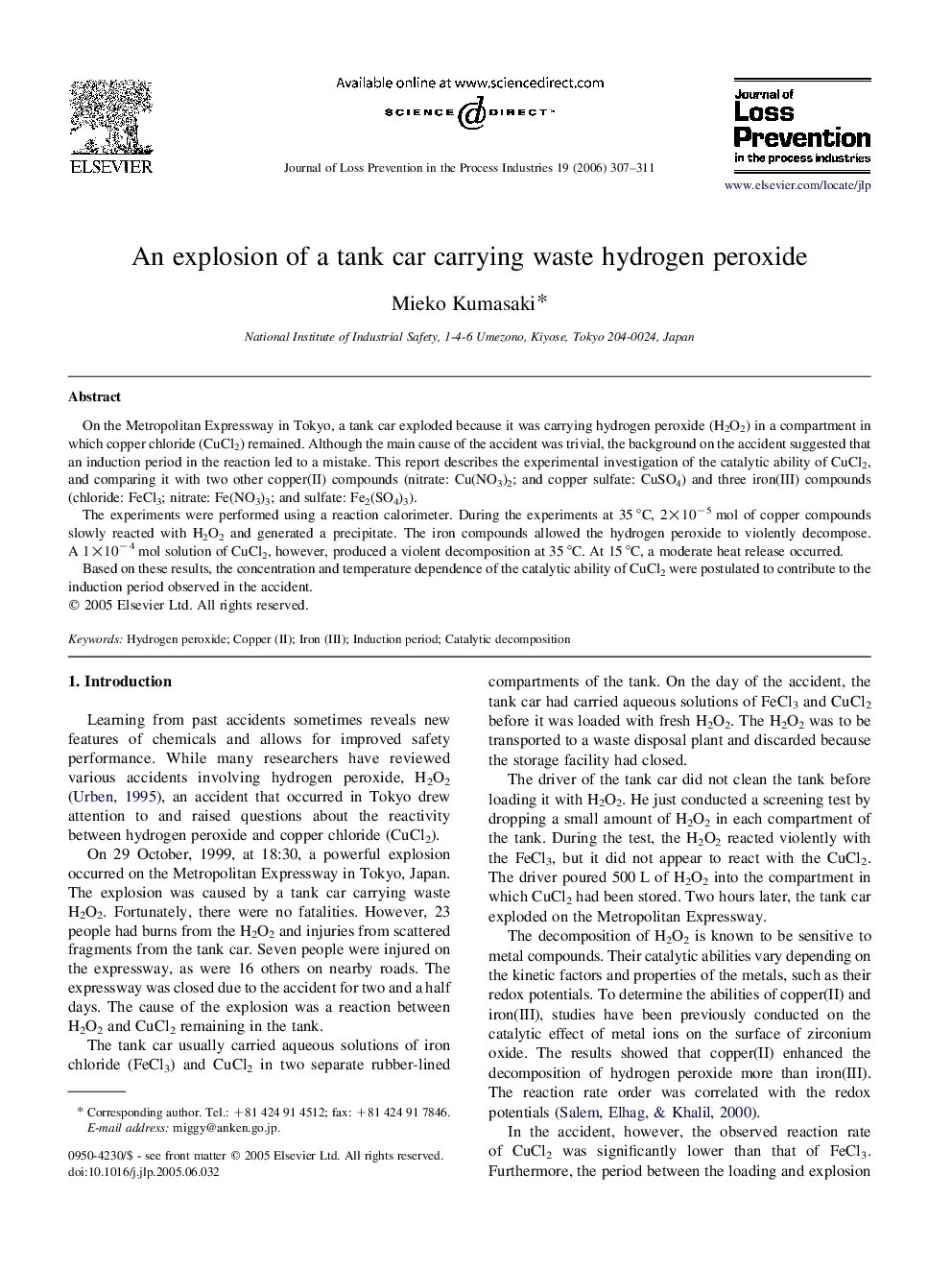| Article ID | Journal | Published Year | Pages | File Type |
|---|---|---|---|---|
| 587142 | Journal of Loss Prevention in the Process Industries | 2006 | 5 Pages |
On the Metropolitan Expressway in Tokyo, a tank car exploded because it was carrying hydrogen peroxide (H2O2) in a compartment in which copper chloride (CuCl2) remained. Although the main cause of the accident was trivial, the background on the accident suggested that an induction period in the reaction led to a mistake. This report describes the experimental investigation of the catalytic ability of CuCl2, and comparing it with two other copper(II) compounds (nitrate: Cu(NO3)2; and copper sulfate: CuSO4) and three iron(III) compounds (chloride: FeCl3; nitrate: Fe(NO3)3; and sulfate: Fe2(SO4)3).The experiments were performed using a reaction calorimeter. During the experiments at 35 °C, 2×10−5 mol of copper compounds slowly reacted with H2O2 and generated a precipitate. The iron compounds allowed the hydrogen peroxide to violently decompose. A 1×10−4 mol solution of CuCl2, however, produced a violent decomposition at 35 °C. At 15 °C, a moderate heat release occurred.Based on these results, the concentration and temperature dependence of the catalytic ability of CuCl2 were postulated to contribute to the induction period observed in the accident.
